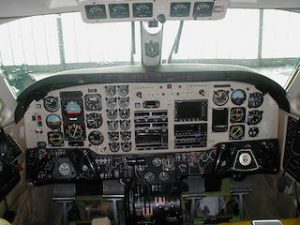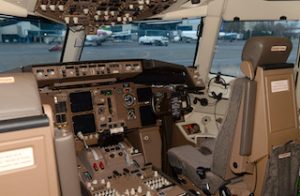Cabin Crew Classes Teach Dangerous Goods
 In the aviation industry, safety is of utmost importance, and one critical aspect of this is the handling of dangerous goods. For aspiring cabin crew members, understanding how to identify, manage, and respond to dangerous goods is a fundamental part of their training. Cabin crew classes provide essential education on this topic, equipping future flight attendants with the knowledge and skills necessary to ensure passenger safety and compliance with aviation regulations. This article will explore the significance of dangerous goods training in cabin crew classes, key components of the curriculum, and best practices for safe handling.
In the aviation industry, safety is of utmost importance, and one critical aspect of this is the handling of dangerous goods. For aspiring cabin crew members, understanding how to identify, manage, and respond to dangerous goods is a fundamental part of their training. Cabin crew classes provide essential education on this topic, equipping future flight attendants with the knowledge and skills necessary to ensure passenger safety and compliance with aviation regulations. This article will explore the significance of dangerous goods training in cabin crew classes, key components of the curriculum, and best practices for safe handling.
Dangerous goods taught cabin crew classes
Dangerous goods, also known as hazardous materials, refer to substances that pose a risk to health, safety, property, or the environment during air transport. These can include items that are flammable, corrosive, explosive, or toxic. Flight attendants are taught how to handle these dangerous goods in the cabin crew classes. The International Air Transport Association and the International Civil Aviation Organisation set strict regulations governing the transportation of dangerous goods to minimise the risks associated with their presence on board.
Categories of dangerous goods
Dangerous goods are classified into nine categories, each representing different hazards. Some common categories include:
-
- Explosives: Items that can cause explosions or create excessive pressure, such as fireworks or ammunition.
- Gases: Compressed gases, such as propane or oxygen, which can be flammable or toxic.
- Flammable liquids: Liquids that can ignite easily, including gasoline and alcohol.
- Toxic substances: Materials that can cause harm or injury to health, such as certain pesticides and chemicals.
- Radioactive materials: Substances that emit radiation and require special handling and transport procedures.
Understanding these categories is crucial for cabin crew members, as it helps them identify potential hazards and respond appropriately.
Importance of dangerous goods training in cabin crew classes
Dangerous goods training is an essential component of cabin crew classes for several reasons:
- Ensuring passenger safety: The primary goal of cabin crew training is to ensure the safety and well-being of passengers. By educating future flight attendants on the risks associated with dangerous goods, they are better equipped to prevent incidents and manage any emergencies that may arise.
- Regulatory compliance: Airlines and cabin crew must adhere to strict regulations regarding the handling of dangerous goods. Training ensures that crew members understand these regulations, helping to prevent violations that could lead to legal repercussions or safety hazards.
- Emergency preparedness: In the event of an incident involving dangerous goods, cabin crew members must be prepared to act quickly and efficiently. Training provides them with the skills needed to respond to emergencies, minimising potential harm to passengers and crew.
Key components of dangerous goods training in cabin crew classes
Cabin crew classes that include dangerous goods training typically cover several essential topics. Here are the key components of this critical aspect of the curriculum:
1) Identification of dangerous goods
The first step in handling dangerous goods is recognizing them. Cabin crew members learn how to identify hazardous materials through labels, markings, and documentation. Training often includes:
-
-
- Understanding labels and symbols: Familiarity with the various symbols and labels used to indicate dangerous goods, such as the diamond-shaped hazard symbols.
- Recognising packing instructions: Knowledge of packing requirements for different types of dangerous goods, including appropriate containment methods.
-
2) Regulations and guidelines
Cabin crew members must be well-versed in the regulations governing dangerous goods transport. This includes:
-
-
- International and national regulations: Familiarity with IATA and ICAO regulations, as well as any additional national regulations that may apply.
- Documentation requirements: Understanding the necessary paperwork for transporting dangerous goods, including declarations and safety data sheets.
-
3) Safe dandling procedures
Once dangerous goods are identified, cabin crew must know how to handle them safely. Training typically covers:
-
-
- Loading and unloading protocols: Proper procedures for loading and unloading dangerous goods to minimize risks.
- Segregation of dangerous goods: Understanding how to separate hazardous materials from non-hazardous items to prevent reactions or accidents.
-
4) Emergency response procedures
In the event of an incident involving dangerous goods, cabin crew members must be prepared to respond appropriately. Training includes:
-
-
- Evacuation procedures: Guidelines for evacuating passengers in case of an emergency involving dangerous goods.
- First aid and medical assistance: Basic first aid training relevant to potential exposures or injuries caused by dangerous materials.
- Reporting incidents: Knowledge of the proper protocols for reporting dangerous goods incidents to the appropriate authorities.
-
5) Practical exercises and simulations
Many cabin crew classes incorporate practical exercises and simulations to reinforce learning. This hands-on approach allows students to practice identifying and handling dangerous goods in a controlled environment. Activities may include:
-
-
- Mock scenarios: Simulating situations involving dangerous goods to test students’ knowledge and decision-making skills.
- Group discussions: Encouraging collaborative problem-solving and sharing experiences related to hazardous materials handling.
-
Best practices for handling dangerous goods
Once cabin crew members have completed their training, they should adhere to best practices when dealing with dangerous goods. Here are some essential guidelines:
- Stay informed: Continuous education is key to staying up-to-date on regulations and best practices. Cabin crew members should regularly review training materials and participate in refresher courses as required.
- Communicate clearly: Effective communication among crew members is vital when handling dangerous goods. Ensure that everyone is aware of the presence of hazardous materials and understands their responsibilities in managing them.
- Follow protocols: Adhering to established protocols for handling dangerous goods is crucial for minimizing risks. This includes following loading and unloading procedures, using appropriate personal protective equipment (PPE), and maintaining accurate documentation.
- Report concerns: If cabin crew members identify any potential issues related to dangerous goods—such as damaged packaging or unclear labelling—they should report these concerns immediately to their supervisors. Prompt reporting can prevent accidents and ensure passenger safety.
- Prioritise safety: Above all, the safety of passengers and crew should be the top priority. In the event of an emergency involving dangerous goods, remain calm, follow established protocols, and prioritise the well-being of everyone on board.
Role of technology in dangerous goods training
As the aviation industry evolves, so does the technology used in cabin crew training programs. Here are some ways technology enhances dangerous goods training:
- E-learning modules: Many training programs now offer e-learning modules that provide flexibility for students. Online courses can include interactive content, quizzes, and video demonstrations to reinforce learning about dangerous goods.
- Virtual reality simulations: Some institutions are incorporating virtual reality into their training programs. VR simulations allow students to experience real-life scenarios involving dangerous goods in a safe and controlled environment, enhancing their ability to respond effectively.
- Mobile applications: Training programs may also utilise mobile applications that provide quick access to information about dangerous goods regulations and handling procedures. These apps can serve as valuable resources for cabin crew members during their work.
Comprehensive training
In conclusion, handling dangerous goods is a critical aspect of cabin crew training that ensures the safety of passengers and compliance with aviation regulations. Cabin crew classes provide essential education on identifying, managing, and responding to hazardous materials, preparing aspiring flight attendants for the responsibilities they will face in their careers.
By understanding the categories of dangerous goods, regulations, safe handling procedures, and emergency response protocols, cabin crew members can effectively contribute to a safe flying experience. Continuous education and adherence to best practices are essential for maintaining safety in the aviation industry.
As you consider enrolling in cabin crew classes, prioritize programs that emphasize dangerous goods training. The skills and knowledge you gain will not only enhance your employability but also prepare you for a rewarding career dedicated to passenger safety in the skies. Your journey toward becoming a flight attendant starts with a commitment to excellence in safety training and a passion for serving others.










